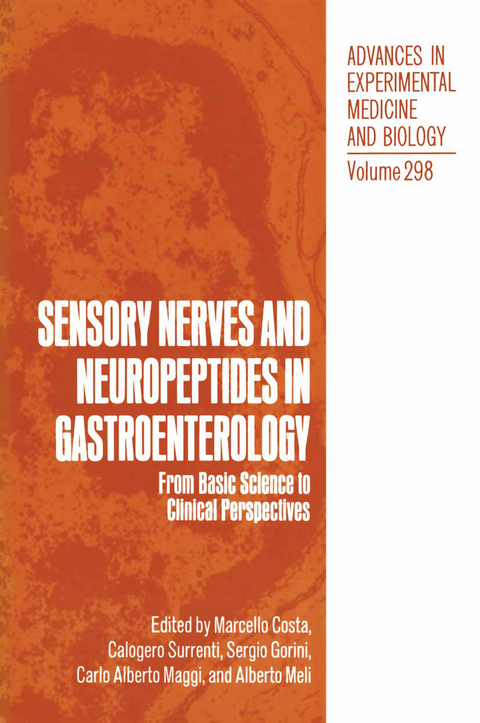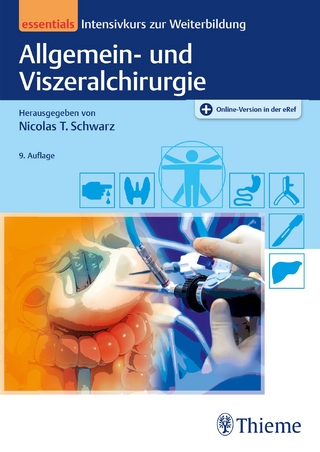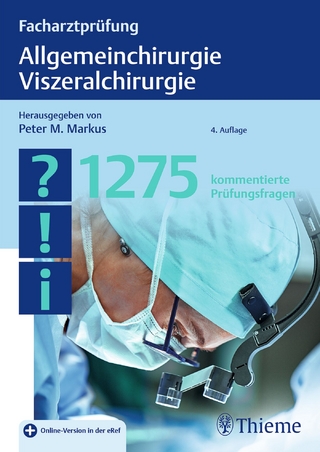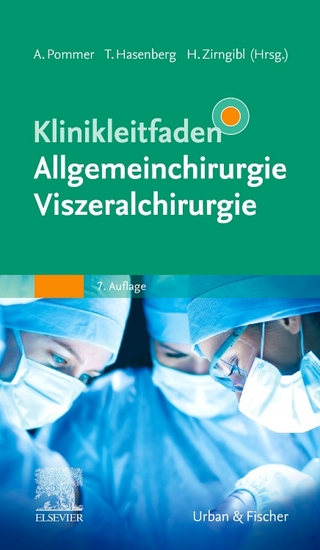
Sensory Nerves and Neuropeptides in Gastroenterology
Springer-Verlag New York Inc.
978-1-4899-0746-2 (ISBN)
In the past 15 years much evidence has accumulated which indicates the paramount importance of sensory nerves in reg ulating functions of the gastrointestinal tract. In parallel, the attention of researchers in this field has been increas ingly attracted to the role played by neuropeptides in the normal and diseased gut. Basic research on the peculiar properties of capsaicin, the pungent ingredient from plants of the genus Capsicum, has allowed the gap between these two areas of research to be bridged. Sincethen, the study of gut afferents and neuropeptides has become more and more interconnected and recognized as a major avenue to understand ing the pathophysiology of various human diseases. It is widely recognized that a certain subset of primary afferents synthesize, store and release neuropeptides (such as tachykin nins and calcitonin gene-related peptide) from their central and peripheral endings, the latter being widely distributed in the alimentary canal and related organs (liver, pancreas). The First International Meeting on Sensory Nerves and Neuropeptides in Gastroenterology, held in Florence from December 4-5, 1989, sponsored and organized by Fondazione Internazionale Menarini, aimed to focus the current status of research in this field. The contributions presented at the meeting and in this book delineate a suggestive scenario in which sensory nerves of the gut, and the multiple messages they carry through the release of neuropeptides, are to be considered as a major target for the development of new drugs potentially useful in a number of diseases of the gastro intestinal tract.
Capsaicin as a Tool for Studying Sensory Neuron Functions.- Chemical Coding of Neurons in the Gastrointestinal Tract.- Occurrence and Distribution of Substance P- and CGRP-Containing Nerve Fibers in Gastric Mucosa: Species Differences.- Tachykinin and Calcitonin Gene-Related Peptide Immunoreactivities and mRNAs in the Mammalian Enteric Nervous System and Sensory Ganglia.- Peptides and Their Receptors on Afferent Neurons to the Upper Gastrointestinal Tract.- Activation of Sensory Nerves by Kinins: Pharmacologic Tools for Studying Kinin Receptors.- Evolutionary Aspects in the Peripheral Peptidergic Signals: CRF-Like Peptides and Modulation of G.I. Functions.- Gastric and Jejunal Ultrastructure in Capsaicin-Treated Rats with and without Experimental Ulcer.- Afferent Nerve-Mediated Control of Gastric Mucosal Blood Flow and Protection.- Vagal Afferent Innervation and Regulation of Gastric Function.- Decrease of Duodenal Calcitonin Gene-Related Peptide- and Substance P-Like Immunoreactivity in Rat Duodenal Ulcers.- Opioid-Sensitive Peripheral Neuronal Activity in the Modulation of Gastric Mucosal Injury.- Relationship between Sensory Neuropeptides and Other Vasoactive Mediators in Modulating Gastric Mucosal Integrity.- Effect of Substance P and Related Neurokinins on Gastric Acid Secretion.- Effect of Calcitonin Gene-Related Peptide (CGRP) on Aspirin- and Ethanol-Induced Injury in the Rat Stomach.- Visceral Pain: Pathophysiology and Clinical Aspects.- Central and Peripheral Actions of Calcitonin Gene-Related Peptide on Gastric Secretory and Motor Function.- Sensory Nerves of the Intestines: Role in Control of Pyloric Region of Dogs.- Vasoactive Intestinal Polypeptide (VIP) and the Specific Motor Response to Capsaicin of the Human Isolated Ileum.- Studies on Secretomotor Effects of Galanin on Various “In Vivo” or “In Vitro” Preparation.- Aspects on the Role of Tachykinins and Vasoactive Intestinal Polypeptide in Control of Secretion, Motility and Blood Flow in the Gut.- Efferent Function of Capsaicin-Sensitive Nerves and Neurogenic Vasodilation in Rat Mesenteric Circulation.- Tachykinin Receptors in the Longitudinal and Circular Muscle of the Human Ileum.- Alterations in Receptors for Sensory Neuropeptides in Human Inflammatory Bowel Disease.- Sensory Denervation with Capsaicin Reduces the Liver Collagen Deposition Induced by Common Bile Duct Obstruction in Rats.- Autonomic Neuropathy in Liver Cirrhosis: Prevalence and Association with Clinical and Laboratory Features.- 2-Deoxy-D-Glucose (2-DG)-Induced Increase in Gastric Acid Secretion Is Impaired in Capsaicin-Pretreated Rats.
| Reihe/Serie | Advances in Experimental Medicine and Biology ; 298 |
|---|---|
| Zusatzinfo | XI, 308 p. |
| Verlagsort | New York |
| Sprache | englisch |
| Maße | 155 x 235 mm |
| Themenwelt | Medizinische Fachgebiete ► Chirurgie ► Viszeralchirurgie |
| Medizinische Fachgebiete ► Innere Medizin ► Gastroenterologie | |
| Medizinische Fachgebiete ► Innere Medizin ► Hepatologie | |
| Medizin / Pharmazie ► Medizinische Fachgebiete ► Pharmakologie / Pharmakotherapie | |
| Naturwissenschaften ► Biologie ► Zoologie | |
| ISBN-10 | 1-4899-0746-7 / 1489907467 |
| ISBN-13 | 978-1-4899-0746-2 / 9781489907462 |
| Zustand | Neuware |
| Haben Sie eine Frage zum Produkt? |
aus dem Bereich


